| Gemstone Chart |
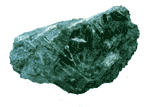 Natural Actinolite Natural Actinolite
Actinolite is a natural mineral with the chemical formula Ca2(Mg,Fe)5Si8O22(OH)2.the crystals have a hardness of 5.5 on Moh¡¯s scale, and there are two directions of cleavage. Natural actinolite is semi-precious to precious stone used in jewelry and other adornments.
Color: Green, Brown
Categories: semi-precious stone
Chemical Composition: Amphibole Group
Crystal Group: Monoclinic
Refractive Index: 1.620 - 1.642
Hardness: 5.5
Density: 3.05
Occurrence: Tanzania
|  Natural Brazilianite Natural Brazilianite
Brazilianite is a wonderful gemstone that is rare and hard to find. The main production area is in the Minas Gerais region of Brazil.
Color: yellow, greenish yellow
Categories: semi-precious stone
Chemical Composition: A hydrous sodium aluminum phosph
Crystal Group: Monoclinic
Refractive Index: 1.603 - 1.623
Hardness: 5.5
Density: 2.940 - 2.998
Occurrence: Minas Gerais, Brazil; New Hampshire, U.S.A.
| 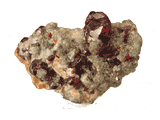 Natural Clinohumite Natural Clinohumite
Clinohumite is a rare mineral and an especially rare gemstone. It is a member of the humite group of minerals, which includes humite, clinohumite, chondrodite, and norbergite.Only two sources of gem-quality material are known: the Pamir Mountains of Tajikistan, and the Taymyr region of northern Siberia.
Color: Brown, yellow, white, orange, or reddish brown
Categories: semi-precious stone
Chemical Composition: Magnesium Silicate Fluoride OH
Crystal Group: Monoclinic
Refractive Index: 1.625 ¨C 1.668
Hardness: 6 - 6.5
Density: 3.17 - 3.35
Occurrence: Extremely rare - gem quality found only in the Pamir Mountains, Tadzhikistan. Other mineralogical occurrences include, Mt. Vesuvius, Italy; Pargas, Finland; Llanos de Juanar, Malaga, Spain; Tilly Foster Mine, New York; Fort Defiance, Apache County, Arizona; Crestmore Quarry, Riverside County and Lower Lake, Fresno County, California; Luna, New Mexico and Franklin, New Jersey, USA.
| 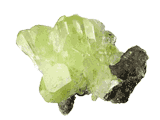 Natural Diopside Natural Diopside
Diopside is a common mineral and is found worldwide. Diopside has several varieties, including a chromium-rich gem variety called chrome diopside.
Color: pale bluish green or dark blue green, brownish green or dark blue green. yellowish green or yellow bluish green.
Categories: semi-precious stone
Chemical Composition: CaMgSi2O6
Crystal Group: Monoclinic
Refractive Index: 1.665 - 1.730
Hardness: 6
Density: 3.25 - 3.55
| 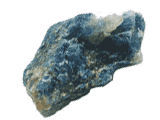 Natural Euclase Natural Euclase
Euclase is a rare mineral, resembling beryl in color and hardness.Euclase is found in granitic pegmatites with other gem minerals such as topaz and beryl.
Color: White, pale blue, greenish blue, dark blue.
Categories: semi-precious stone
Chemical Composition: BeAlSiO4(OH)
Crystal Group: Monoclinic
Refractive Index: 1.652-1.672
Hardness: 7.5
Density: 3.18
Occurrence: Brazil, Tanzania, Russia, Zimbabwe, Madagascar, Austria.
| 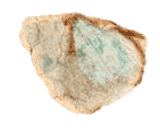 Natural Jadeite Natural Jadeite
A rare, usually green mineral of the pyroxene group. Jadeite can also occur in white, auburn, buff, or violet varieties. The most highly valued form of jade consists of jadeite.Jade has a history in China of at least four thousands years.Experts believe that, although more expensive, diamonds and gold cannot be compared with jade - jade is animated with a soul.
Color: Pure white thru pink, brown, red, orange, yellow, mauve, violet, blue, and black, to an extensive range of green and mottled green and white.
Categories: semi-precious stone
Chemical Composition: NaAl(SiO3)2
Crystal Group: Monoclinic
Refractive Index: 1.654 - 1.667
Hardness: 7
Density: 3.32
Occurrence: Northern Myanmar. Non commercial discoveries of Jadeite have also been reported in China; Russia (in the Polar Urals); Niigata, Japan; San Benito County, California, USA, and Guatemala.
| 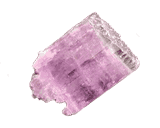 Natural Kunzite Natural Kunzite
Kunzite is the pink to light purple gem variety of the mineral Spodumene.Although kunzite is a relatively soft and delicate gem, and can fade after prolonged exposure to light, its appealing color makes it a popular gem. Small gems are seldom cut from kunzite because of its cleavage and strong pleochroism. It is rarely seen in rings, necklaces, or any other forms of jewelry where small stones are required.
Color: Pink, Lilac, Light Violet
Categories: semi-precious stone
Chemical Composition: LiAlSi2O6
Crystal Group: Monoclinic
Refractive Index: 1.660 - 1.675
Hardness: 7
Density: 3.17 - 3.19
Occurrence: Africa, Brazil, Canada, Madagascar, Mexico, Myanmar, Afghanistan, Sweden, and USA (California).
| 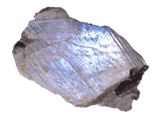 Natural Moonstone Natural Moonstone
The most common moonstone is of the mineral adularia.It is an opaque stone, a simi-clear white, kind of the color of watered down milk.Moonstone Jewellery uses the gemstone moonstone as its main stone.
Color: white, blueish white.
Categories: semi-precious stone
Chemical Composition: KalSI3O8
Crystal Group: Monoclinic
Refractive Index: 1.518 ¨C 1.526
Hardness: 6 ¨C 6.50
Density: 2.55 ¨C 2.57
Occurrence: Sri Lanka, India, Madagascar, Burma, Tanzania, U.S.A.
|
|
